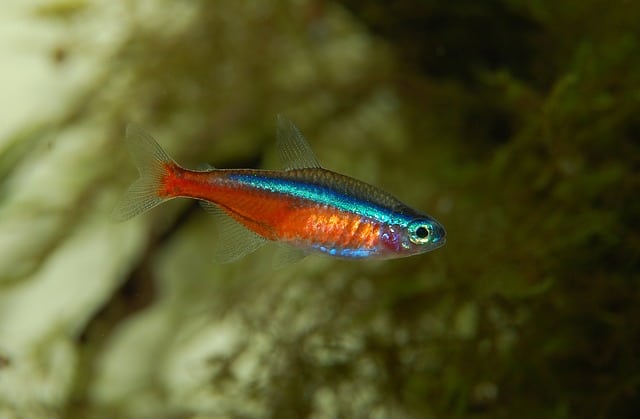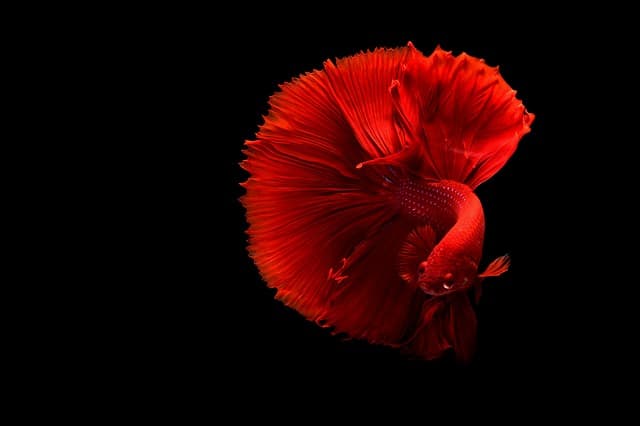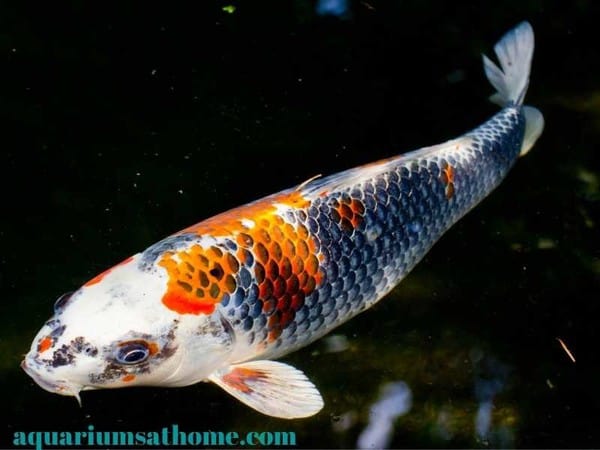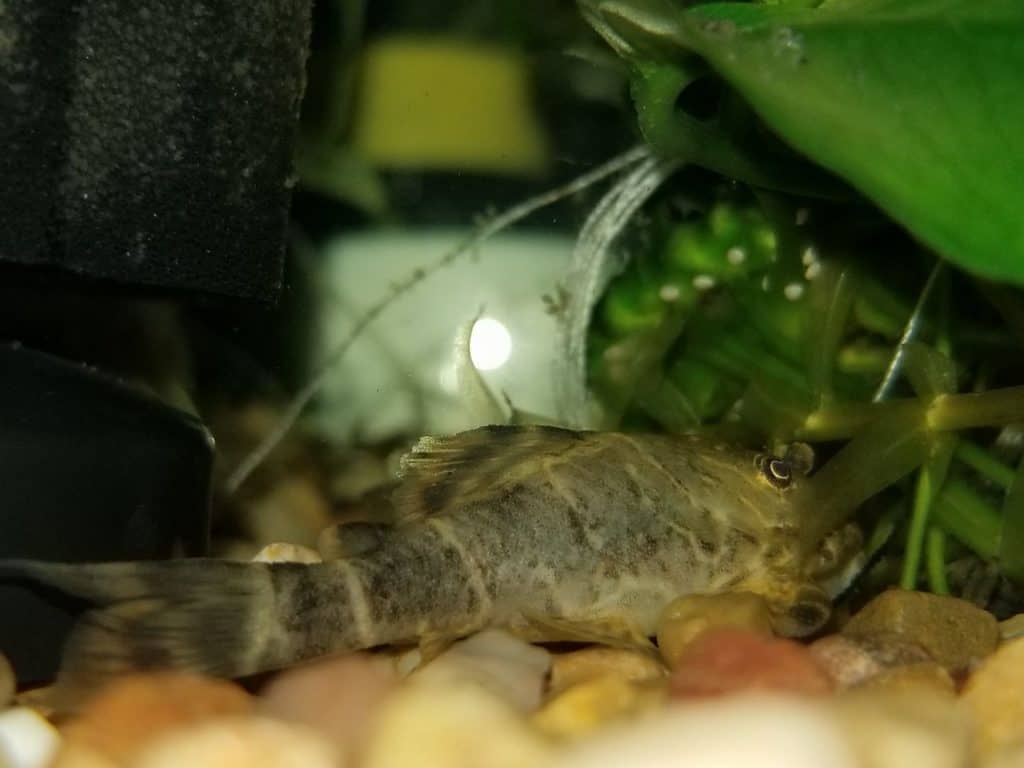Turtles, though not the conventional choice of most aquarium hobbyists, can make excellent pets for those so inclined! If you’re looking to add a reptile to your aquarist repertoire, then a turtle is a great choice. Easy to care for, interactive, and (not to mention) adorable, you may be wondering which species stay small and can be kept in a less than 100-gallon aquarium?
The ‘top 10’ aquarium turtles that stay small and can be kept in a less than 100-gallon tank include red-eared sliders, yellow-bellied sliders, bog, mud, musk, reeves, spotted, desert box, diamondback terrapins, and African sidenecks.
Now that you know which species are best for a medium- to large-sized aquarium, let’s explore this topic further. Together we’ll learn about each type in more detail so you can decide which ones best suit your reptilian aquarist needs. We’ll also briefly explore what you need to care for a turtle as well as why they make for good pets.
So, if you’re ready to learn all you need to know about small aquarium turtles and how to care for them, then let’s get right to it!
What are the Best Aquarium Turtles?
The ‘top 10’ best turtles for an aquarium that stay small and require less than a 100-gallon tank include the following:
Red-Eared Slider Turtles
Red-eared sliders are endemic to North America and highly popular in the aquarist trade. They got their name from the distinct red patches around their eyes and ears. Hardy and easy to maintain, this species is omnivorous and can live anywhere from 20 to 40 years in captivity. They reach full-grown lengths of 6 to 12 inches and require a 50-gallon tank minimum.
Yellow-Bellied Slider Turtles
Yellow-bellied sliders are native to North America and the perfect example of a land-water turtle. Their shells vary in color from green to brown to black with yellow stripes. This species reaches maximum lengths of 12 inches and requires a large, 75-gallon tank minimum. Active and sociable, they can live anywhere from 30 to 40 years in captivity.
Bog Turtles
Bog turtles originate in swamps and marshes in eastern United States and prefer murky, brackish water conditions. Dark-brown or black with a yellow band around their necks, these turtles can live up to 30 years in captivity and require a 40-gallon tank. Great for beginner hobbyists, this species is omnivorous, hardy, easy to care for, and grows to a mere 5 inches.
Mud Turtles
Mud turtles are native to North and South America and reach full-grown lengths of around 5 inches. They need space to roam about and require at least a 75-gallon tank. If well cared for, they can live anywhere from 25 to 50 years in captivity. Unlike the calm, spotted turtle, for example, this species can be temperamental and may bite when provoked or nervous.
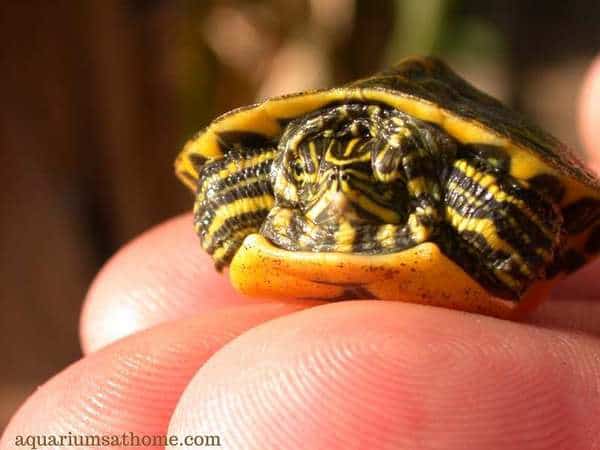
Musk Turtles
Musk turtles are found in eastern areas of North America and get their name from the strong, musky odor they emit. Unlike other turtles, they don’t like brackish water and prefer warmer, freshwater conditions reminiscent of their natural habitat. This species can reach lengths of up to 4 inches, requires a 30-gallon tank, and can live anywhere from 40 to 60 years in captivity.
Reeve’s Turtles
Reeve’s turtles, also known as Chinese pong turtles, are endemic to Asia and found primarily in China, Korea, Japan, and Taiwan. They reach maximum lengths of 9 inches and require a 50-gallon aquarium. Calm and peaceful in their demeanor, they can live up to 20 years in captivity which is less than other species since they’re prone to disease if not properly maintained.
Spotted Turtles
Spotted turtles are found naturally in Canada and the U.S.A. They have brightly colored spots in shades of yellow, orange, and red that pop against their dark-brown or black shells. This species can reach lengths of around 5 inches and be kept in a medium-sized 30-gallon tank. They have a lifespan of 25 to 50 years and unlike other turtles, don’t mind being handled by their owners.
Desert Box Turtles
Desert Box turtles are pale in color and endemic to the United States and Mexico. They reach maximum lengths of 5 inches and can thrive in a medium-sized 30- to 50-gallon tank. Unlike other species, they don’t require a high humidity environment and ideal for aquarists living in drier climates. When well cared for, they can live anywhere from 30 to 50 years in captivity.
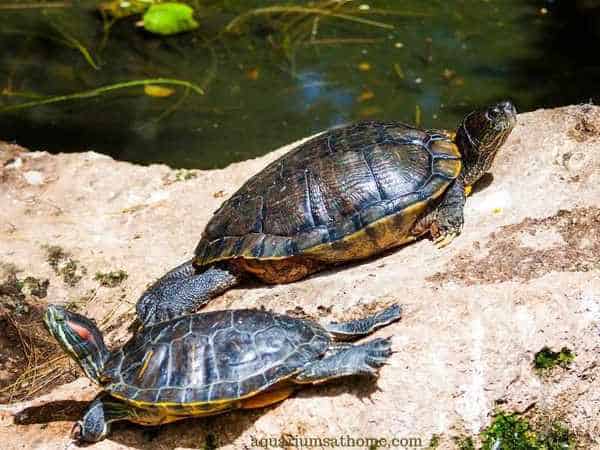
Diamondback Terrapin Turtles
Diamondback terrapins are found naturally in brackish coastal waters in the United States. They grow to maximum lengths of 7-inches and require a large, 75-gallon tank to thrive. This species – though docile and easy to care for – can be prone to fungal infections and shell diseases. Extra care and maintenance will help ensure they live anywhere from 25 to 4-0 years in captivity.
African Sideneck Turtles
African sidenecks originate in freshwater river, lakes, and ponds in Western Africa. They’re unique in their ability to turn their heads sideways, hence the name. This species reaches full-grown lengths of 7- to 12-inches and requires a 75-gallon tank minimum. They can live between 25 and 50 years in captivity if well maintained and when fed the appropriate omnivorous diet.
What Type of Turtle Needs a Larger than 100-Gallon Tank?
Some turtles, though small by reptilian standards, require an extra-large tank (125-gallon or greater) to thrive in captivity. The Florida softshell turtle is one such example. Regardless of their meager 6- to 12-inches stature, this species is known to be aggressive and can deliver a bite hard enough to snap off a finger if stressed or provoked.
Keeping Florida softshell turtles in 125-gallon tank will give them the space they need to stay calm and peaceful. They’re highly active and need a big swimming area. Plenty of food is also needed to sustain their 40-pound full-grown weight. Not for beginner reptilian aquarists, this species can be difficult to handle and requires both skill and knowledge to be raised properly.
What Type of Turtle is Best for a Pet?
When looking to add a turtle to your aquarium, make sure they’re hardy, easy to care for, stay small, have a calm demeanor, and don’t mind being handled. Spotted turtles, for example, grow to a mere 5 inches and are non-aggressive in temperament. They don’t require a lot of space and do quite well in a 30-gallon tank which can easily be kept in a kid’s bedroom.
What do I Need for a Pet Turtle?
Caring for a pet turtle is easy, with the right supplies, that is. All you need is a caged enclosure or tank (size dependent upon the type of turtle you have) with heating/basking lamps, a clean swimming hole, a dry land area for resting, some planted areas for hiding, drinking water, and both plant-and meat-based foods.
Final Thoughts
To conclude, the ‘top 10’ aquarium turtles that stay small and can be kept in a less than 100-gallon tank include red-eared sliders, yellow-bellied sliders, bog, mud, musk, reeves, spotted, desert box, diamondback terrapins, and African sidenecks. Adorable, interactive, and easy to care for, why not consider them the next time you’re considering a new reptilian pet.
I trust this article has been of help to you. Thanks for reading and good luck with your aquarist hobby.
Recommended Posts
How to Keep the Bottom of a Fish Tank Clean?
How Long Do Fish Tanks Last? (Glass Versus Acrylic)
How High Should the Water Level be in a Fish Tank?
Can I Use PVC Pipe in Aquarium?



